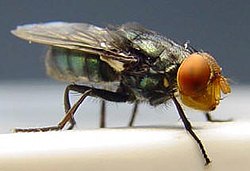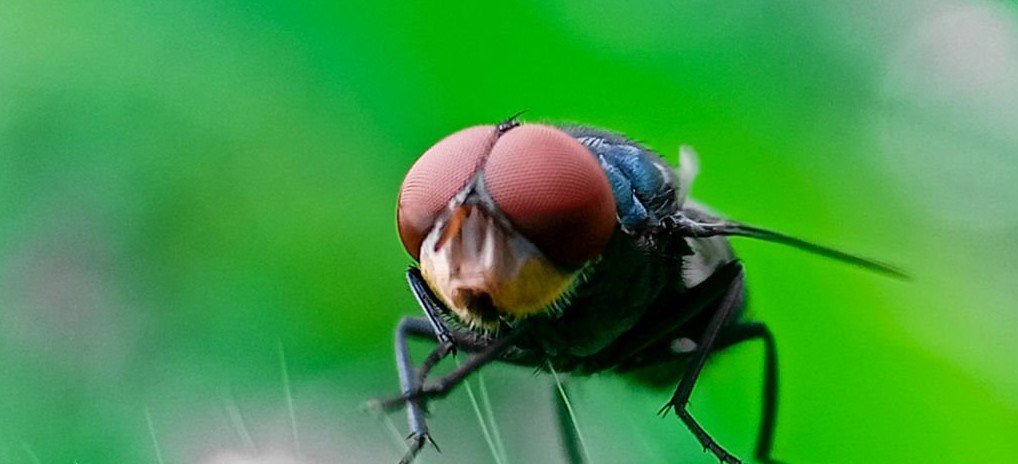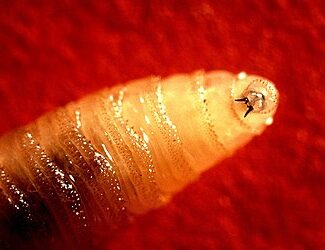The U.S. is dropping millions of sterile flies to stop a deadly flesh-eating parasite—screwworm—from invading Texas. Here’s the science behind it.
Texas on Alert as Government Launches Emergency Screwworm Response
In an unprecedented move, the U.S. Department of Agriculture (USDA) has launched a massive response to prevent a terrifying parasite from re-entering American soil: the New World Screwworm fly. By mid-July 2025, sterile flies are being bred and prepared to be dropped from planes over key areas near the southern U.S. border and into outbreak zones across Mexico. The goal? To stop this deadly insect before it devastates the American livestock industry.
This drastic action is not a drill. It’s a full-scale biological defense operation, and it may be the only thing standing between the U.S. and a multimillion-dollar agricultural crisis.
What is the New World Screwworm Fly?
The New World Screwworm, or Cochliomyia hominivorax, is one of the most dangerous insect parasites known to science. Unlike typical blow flies or houseflies, which feed on dead or decaying material, the screwworm targets living flesh. Females lay their eggs in even the smallest open wound of warm-blooded animals. Once hatched, the larvae (maggots) burrow into the flesh of the host and begin eating it from the inside.

This feeding continues for 5 to 7 days. The larvae then drop to the ground to pupate before emerging as adult flies, starting the cycle again. One female can lay up to 3,000 eggs in her lifetime. Worse yet, the adult flies can travel up to 125 miles in search of a new host.
Historically, these flies were native to parts of the U.S., Mexico, Central America, and South America. They were successfully eradicated from the U.S. in 1982 after decades of control programs, but continued to cause devastation in other parts of the Western Hemisphere.
Screwworm infestations are often fatal for cattle, sheep, wildlife, and even pets. In rare cases, humans have been infected as well, with the larvae burrowing into nasal cavities, wounds, or even eyes, requiring surgical removal.
Why Is the U.S. Dropping Flies from Planes?
It sounds like a bizarre science fiction plot—drop millions of flies from airplanes to stop an outbreak—but this strategy is rooted in decades of proven science. The method is called the Sterile Insect Technique (SIT) and it has been used with incredible success before.
The process involves breeding large numbers of screwworm flies in a lab, sterilizing the males using gamma radiation, and releasing them into the wild. When these sterile males mate with wild females, the result is a biological dead end: no larvae. Because female screwworms only mate once in their lives, each unsuccessful mating significantly reduces the next generation of parasites.
In the 1950s and ’60s, this method was key to wiping out the fly across large swaths of the U.S., Mexico, and even parts of Central America. The USDA’s Plant and Animal Health Inspection Service (APHIS) currently operates a sterile fly factory in Panama, which serves as the front line in keeping the screwworm from re-entering North America. With the latest outbreak in Veracruz, the threat has now crept dangerously close to the U.S. border, prompting urgent action.
Over 100 million sterile flies per week are being prepared for release in affected areas. If the parasite crosses into the U.S., similar drops may begin over parts of Texas and beyond.
What’s Happening in Texas Right Now?
The U.S. is taking no chances. In July 2025, the USDA broke ground on a new $8.5 million sterile fly production and dispersal center in Hidalgo County, Texas. The facility will serve as a forward operating base in the battle against the screwworm, should an outbreak occur north of the border.
The region was chosen due to its high density of livestock operations and its proximity to cross-border agricultural traffic. This is not the first time Texas has faced this danger. In the early 1960s, it was a hot zone for screwworm activity before the original eradication efforts took hold.
Alongside construction, USDA field officers are actively inspecting livestock entering the country. Border checkpoints have ramped up biosecurity, with additional staff deployed to major cattle entry points in South Texas. Local ranchers are receiving alerts and guidance on how to detect early signs of infestation.
According to USDA data, a single outbreak could cost billions of dollars in economic losses if not contained quickly. The agency emphasizes that acting preemptively—before an outbreak spreads—is not only more effective but also vastly more affordable.
How Do Screwworms Harm Animals and Humans?
The damage inflicted by screwworms is gruesome and swift. Once a female fly lays her eggs in an open wound or soft body area (such as the eyes, nose, navel, or mouth), the larvae hatch and begin to eat through healthy tissue. The infestation quickly grows, drawing in more flies and exacerbating the wound.
Animals suffering from screwworm infestation exhibit signs such as:
- Foul-smelling wounds that worsen rapidly
- Visible maggots or tissue loss
- Restlessness, constant licking or shaking of the head
- Loss of appetite and rapid weight loss
- Death in severe or untreated cases
Veterinarians often describe these infestations as the most horrific cases they encounter. Treating them requires immediate cleaning, antibiotic treatment, maggot removal, and wound dressing. For livestock, such care is costly and difficult to scale.
In humans, screwworm infestations are rare but extremely painful. Documented cases include infestations in ear canals, nasal passages, and surgical wounds. If caught early, treatment is effective—but delays can lead to tissue destruction and permanent damage.

Where Is the Current Threat Originating From?
As of July 2025, the USDA and its Mexican counterparts have confirmed multiple outbreaks of screwworm fly infestations across Veracruz, Tabasco, and Chiapas in Mexico. These areas are known for their dense livestock populations and warm, humid climates—ideal breeding grounds for the parasite.
The concern is that flies from these areas could easily hitch rides on animals, vehicles, or even humans traveling north. With the U.S.–Mexico border just a few hundred miles away, and trade routes in constant motion, the window for a cross-border outbreak is dangerously wide.
The last major U.S. screwworm case was in 2016, when the parasite infected Key deer in Florida. That outbreak resulted in the deaths of over 130 deer and required months of coordinated eradication efforts. It was a sobering reminder that screwworms are only ever one small breach away from reclaiming lost territory.
The USDA warns that if not stopped, screwworms could spread across the southern U.S. in a matter of months, triggering quarantine zones, mass livestock culls, and trade restrictions.
Also Read
What’s at Stake if the Screwworm Returns?
The economic implications of a screwworm resurgence are massive. The U.S. cattle industry alone is valued at over $80 billion annually. Add in sheep, goats, pigs, horses, and pets, and the exposure grows exponentially.
A widespread outbreak would lead to:
- Increased animal deaths and loss of breeding stock
- Quarantine zones and disrupted trade routes
- Costly treatment and decontamination efforts
- Loss of confidence in U.S. agricultural exports
In 2017, a USDA risk assessment estimated that a nationwide outbreak could cost more than $1.5 billion per year if left unchecked. Preventing that with a few hundred million in fly drops is considered a bargain.
Additionally, wildlife and endangered species are at risk. In the Florida outbreak, federally protected deer suffered the brunt of the losses. Similar consequences could strike animals like bighorn sheep, elk, or pronghorn antelope in the southwest.

What Should the Public and Ranchers Do Now?
While the USDA is leading the charge, community awareness and vigilance are vital to stopping the screwworm before it spreads.
Livestock owners should:
- Inspect all animals daily for signs of wounds or infestation
- Avoid unnecessary surgeries or branding during high-risk periods
- Use insect repellents and fly control strategies
- Report any suspicious cases to local animal health authorities
Pet owners should:
- Keep pets indoors or covered during fly season
- Treat wounds quickly and monitor for maggots
- Seek immediate veterinary care if strange symptoms develop
The general public, especially travelers and campers, should:
- Cover cuts and scratches when outdoors
- Avoid handling wild or injured animals
- Monitor for any signs of unusual skin activity after travel to outbreak areas
In short: if you see something, report it.
Fighting Flies with Science
As strange as it sounds, this is a textbook case of using science and foresight to protect a nation. The U.S. once defeated the screwworm through innovation and international cooperation—and it’s doing it again.
From sterile fly factories in Panama and Texas to mid-air insect releases and high-tech border monitoring, this campaign shows what’s possible when biosecurity is taken seriously.
“This isn’t just about bugs,” said USDA lead scientist Dr. Felicia Tran. “It’s about protecting our economy, our ecosystems, and the future of food.”
In the war against the New World Screwworm, the battleground is quiet, airborne—and possibly over your head. Let’s hope the strategy works.
